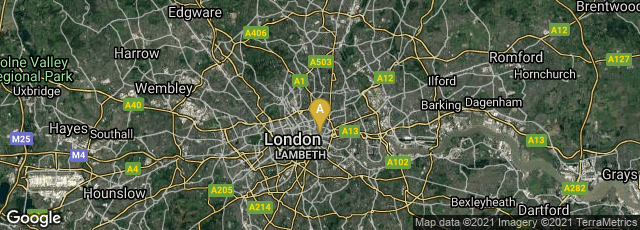This is a drawing by Roger Tomlin of Bloomberg Wax Tablet 38. as reproduced from the Roman Inscriptions of Britain website. The inscription ws written in wax filling in the indentation, part of which is visible as a frame around the writing. The writing consists of a letter regarding property. This is one of the later tablets found at the Bloomberg site, dated 80-95 CE.


A: London, England, United Kingdom
Excavated between 2010 and 2013 when the Bloomberg London building was constructed, the Bloomberg tablets, consist of 405 wooden tablets written from 50 to 80 CE. These are the earliest examples of handwriting found in Britain, dating from the earliest years of Roman rule in Britain. They include the earliest date recorded on a handwritten document in Britain--a tablet marked with Jan. 8, 57. The tablets were excavated from thick wet mud generated by the underground river Walbrook that kept the soil in that location moist, limiting the exposure of the tablets to oxygen, and preserving them for almost 2000 years. 79 of the tablets were found to be legible.
All but two of the tablets were wax tablets. An indentation in the wooden tablets was originally coated with black beeswax, in which messages were inscribed with a stylus, leaving inscriptions legible in the lighter colored wooden where the wax had been moved away by the stylus. By the time the wax tablets were excavated the wax had been lost, and what remained legible was parts of the inscriptions that were left as scratches by the stylus in the soft wood under the wax. Because the inscriptions were only partially preserved, and some of them had been used more than once, with the wax smoothed out for re-using in between uses, reading the scratched embedded in the wood was sometimes a problem in cryptanalysis, filling in the lacunae, or sorting out the letters, words and phrases, to interpret their meaning.
In addition to the 403 wax tablets there were two ink tablets, inscribed with a pen.
"Like the Temple Court tablet found nearby in 1959 (Turner and Skutsch 1960; Chapter 6; GM31), they are in the ‘letter format’ well known from Vindolanda (Tab Vindol 2, 40–1): a rectangular wood-shaving was scored vertically down the middle, so as to be folded into a diptych; the text was written in two columns, (i) left and (ii) right. Apart from some illegible fragments (MOL acc no. 24479; Merrifield 1965, 182, pl 103), from the former Bank of London and South America (BOLSA) on Queen Street–Queen Victoria Street (GM144, Table 13), these are the only ink-leaf tablets yet found in London. The much later ink tablet from Drapers’ Gardens (Tomlin 2011a, 446−8, no. 9, fig 8) is a stylus tablet: the outer (plain) face was inscribed in ink with a text dated 3 December ad 158, which probably duplicated the inner text on wax (Table 13). Even ).
"Inkwells could be of pottery, glass or metal: finds from Bloomberg London and earlier excavations on the site at Bucklersbury House include fragments of copper-alloy inkwells (Marshall and Wardle in prep), and 12 fragments of samian inkwells were also recovered from Bloomberg London (Bryan et al in prep; cf Monteil 2008). Pens could be made from metal or organic material (the Latin word for pen, calamus, means reed). A substantial number of narrow-bladed knives, argued to be penknives and so part of writing sets, have been recovered from early Roman deposits at Bloomberg London. Fig 139 illustrates a metal cylindrical inkwell and pen, and a penknife, all from London" (https://romaninscriptionsofbritain.org/tablondbloomberg/ink-tablets, accessed 9-2020).
"The tablets were translated by Dr. Roger Tomlin, an expert in Roman cursive, the writing style in which the tablets were written.[7] Tablets vary in content, including the oldest financial document from the city of London (dating to 8 January 57 AD),[7] legal documents including a judge calling a pretrial hearing, and educational material. One tablet shows the alphabet written out, indicating the presence of perhaps the first school in Britain. Additionally, among the tablets there are over 100 names of people of all different professions and social classes who lived in London at the time, such as slaves, merchants, soldiers, and politicians. One prominent figure that is named is Julius Classicus, who was a commander in the Roman auxiliaries. One tablet contains the first mention of the name of the city of London, more than a half a century earlier than what was previously thought to be the first naming of London in Tacitus's Annals.[8] (Wikipedia article on Bloomberg tablets, accessed 9-2020).
The Bloomberg tablets were published as Roger S. O. Tomlin, Roman London's first voices: Writing tablets from the Bloomberg excavations, 2010-2014. London: Museum of London Archaeology, 2016. In September 2020 this work was available as a free e-book from mola.org.uk at this link.